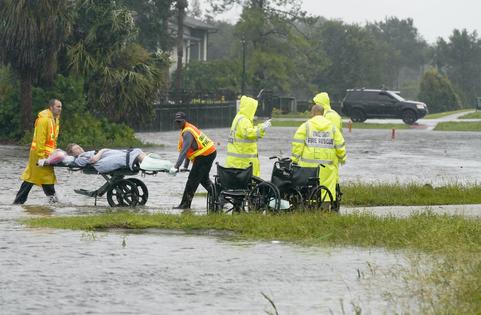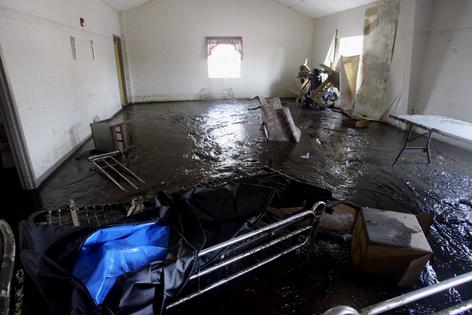Hurricane Ian flooded a hospital and forced evacuations from dozens of nursing homes – many health facilities face similar risks from severe storms
Published in Health & Fitness
Hurricane Ian, one of the most powerful storms to hit the U.S., tore part of the roof off a hospital in Port Charlotte, Florida, and flooded the building’s lower level emergency room, sending staff scrambling to move patients as water poured in. At least nine hospitals and dozens of nursing homes had to transfer patients after losing access to clean water because of the storm.
Health care services are essential at any time, but when disasters strike, those services become even more crucial as injuries rise.
Yet in many coastal communities, the hospitals were built in locations that are at increasingly high risk of flooding during hurricanes.
I study ways to improve disaster communications, including how health care organizations prepare for severe weather events. Here’s what research shows about the rising risks.
Given the impact of climate change, many areas are susceptible to severe weather events and hazards. Health care facilities, including hospitals, clinics and long-term care facilities, are no exception.
A study released Sept. 29, 2022, as Ian was leaving Florida, found that even weak hurricanes can pose a severe risk to scores of hospitals along the U.S. coasts.
In 25 metropolitan areas along the Atlantic and Gulf coasts, the authors found that at least half of the hospitals are at risk of flooding from a Category 2 storm, defined as wind speeds of 96 mph to 110 mph. In some cities, including Lake Charles, Louisiana; Naples, Florida, and Ocean City, New Jersey, 100% of the hospitals are considered at risk.
Those risks are rising with climate change. The study’s Harvard University authors estimated that the likelihood of coastal hospitals flooding would rise 22% this century.
What’s important about this finding is that communities can begin to identify hospitals at high risk and develop both backup plans and measures to help protect them and their patients.
The U.S. has a history of hospital disasters during severe weather. The aftermath of Hurricane Katrina in 2005 opened many people’s eyes to what disrupted health care systems look like. During that storm, many hospitals were without power and the ability to communicate, and experienced damage to water and sewage services. Several could not replenish supplies of food, medicine, blood and linen, yet had to continue operations under horrific conditions.
...continued











Comments